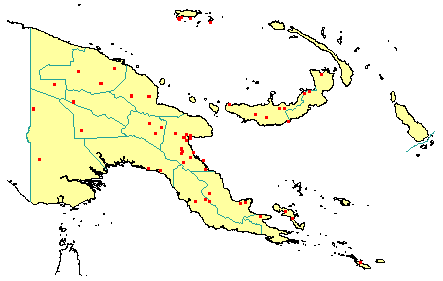
in PNGplants database
PNGTreesKey – Cerbera floribunda K.Schum. |
Barry Conn (NSW) & Kipiro Damas (LAE).
Guide to trees of Papua New Guinea
Copyright held by the authors, National Herbarium of New South Wales, and Papua New Guinea National Herbarium
Die Flora von Kaiser Wilhelms Land 111 (1889)
Other Literature: P. van Royen, Manual of Forest Trees of Papua New Guinea 23 (1964)
Family: Apocynaceae
Dicotyledon
Timber Group: Minor hardwood
Field Characters: Large canopy tree (to 25 m high) or Small sub-canopy tree; Bole cylindrical (30-70 cm diam.); straight (bole 8-18 m long); buttresses buttresses absent; spines spines absent; aerial roots aerial roots absent; stilt roots stilt roots absent; Bark dark grey, rough, coarsely pustular, rarely lenticels rounded/swelling or lenticels irregular; Subrhytidome (under-bark) pale yellow; less than 25 mm thick, 6.0-8.0; bark blaze consisting of one layer; strongly aromatic; pleasant; outer blaze yellow, speckled, granular with splinters; inner blaze yellow, speckled, granular with splinters; bark exudate (sap) present, white/milky, flowing, colour not changing on exposure to air, sticky; terminal buds not enclosed by leaves.
Indumentum: Complex hairs absent; stinging hairs absent; mature twig indumentum (hairs) absent.
Leaves: Leaves spaced along branches, spiral (leaves occurring singly at a node and arranged spirally up the branchlet), simple (a leaf composed of a single blade); petiole present, not winged, attached to base of leaf blade, not swollen; leaves usually broadest above middle or broadest at or near middle, 13.0-15.0 cm, 3.0-4.5 cm; symmetric, entire, not dissected or lobed, acuminate (shortly), venation pinnate, secondary veins open, prominent, intramarginal veins absent; leaves lower surface pale green, upper surface dark green (glossy), indumentum (hairs) absent; absent; domatia absent; stipules absent.
Flowers: Inflorescence axillary, flowers on a branched axis, cones absent; flowers bisexual, stalked, flowers with many planes of symmetry, 50.0-60.0 mm long, diameter large (more than10 mm diam.) (20-28 mm diameter); perianth present, with distinct sepals and petals whorls (with corolla lobes twisted in bud), inner perianth greenish white or pale green; 5, some or partly joined; stamens 5, short present, free of each other, joined to the perianth; ovary superior, carpels joined (when more than one), locules 2; styles solitary, 1.
Fruits: Infrutescence arranged on branched axis (usually in pairs), fruit 80.0-100.0 mm long, 50.0-60.0 mm diam., blue, not spiny, non-fleshy to fleshy (with woody fibrous endocarp), simple, indehiscent, drupe (water dispersed); seeds 1-2, much more than 10 mm long (up to c. 30 mm long), not winged to winged (slightly (sometimes), narrow (longer than wide), seed 1-10 mm diam. (8-12 mm diam.).
Distribution: West Sepik, East Sepik, Madang, Morobe, Western Highlands, Eastern Highlands, Southern Highlands, Western, Gulf, Central, Northern, Milne Bay, Papuan Islands, New Britain, New Ireland, Manus, Bougainville.
 | Botanical records in PNGplants database |
iFiles:
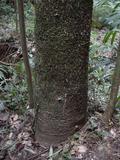
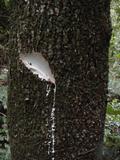
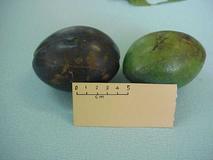
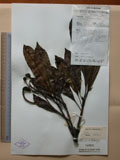
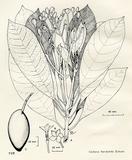 .
.